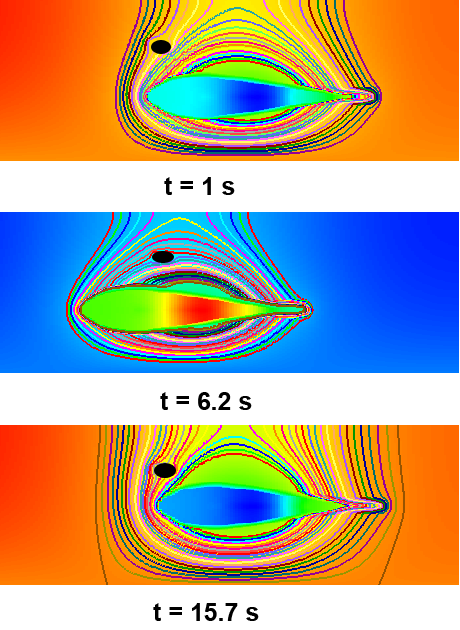Electrohydrodynamics

Electroosmosis and capillary electrophoresis
Electroosmotic flows are commonly used in microfluidic devices. By the mid 1990’s there were several experiments on developing capillary electrophoresis devices for sample separation. We developed a numerical tool that could help in the design of such devices. This was the earliest work of the kind in this area (Patankar & Hu 1998).
Electrophoresis
A commonly used result in electrophoresis is that a swarm of insulating particles of any shape and size, in any configuration, with the same slip condition (i.e. with the same zeta potential and infinitesimally thin Debye layers), moves with the same electrophoretic velocity as a single isolated particle. We have proved this general result (Patankar 2009). Such a proof had not been available inspite of the fact that the result has been assumed in the past.
Electrohydrodynamic instabilities
We are interested in instabilities in electrohydrodynamic flows. Instabilities could be used to mix fluids in microfluidic devices. In particular we have studied the instability that occurs between two miscible liquid streams with different electrical conductivities. Santiago and co-workers developed a numerical model to understand the instability. They considered a diffuse interface of electrical conductivity between the two liquid streams. Based on prior work, it was not clear how to solve the problem in the important limiting case of a sharp interface.
We have shown that the problem can, in fact, be solved by considering a sharp interface between the two liquid streams. It is very useful to analyze this limiting case which results in a much easier problem. The appropriate scales emerge from the analysis and the critical condition for the instability is given by a non-dimensional parameter.
The sharp interface approach can potentially be used to analyze several more situations of immediate interest, including the effect of AC fields. Optimal ways of imposing the electric field could be tried out with an easier problem at hand. This could have a significant impact on designing and developing optimal mixing conditions.
The approach can also be useful in problems where the instabilities need to be curbed, e.g., in sample stacking.
